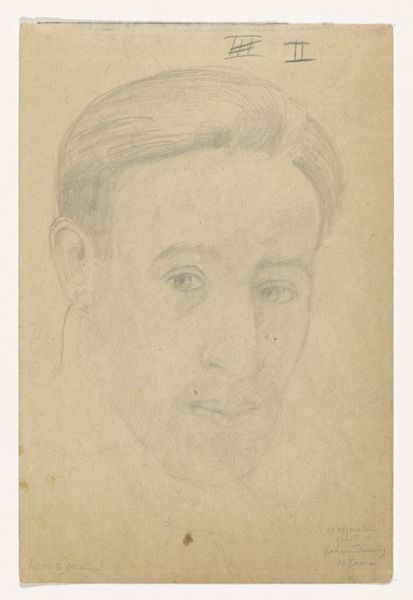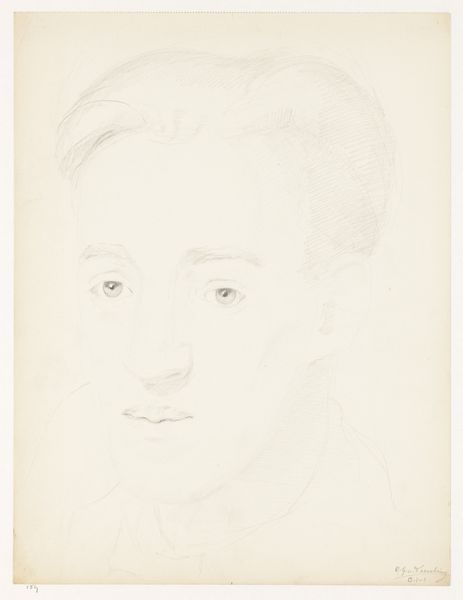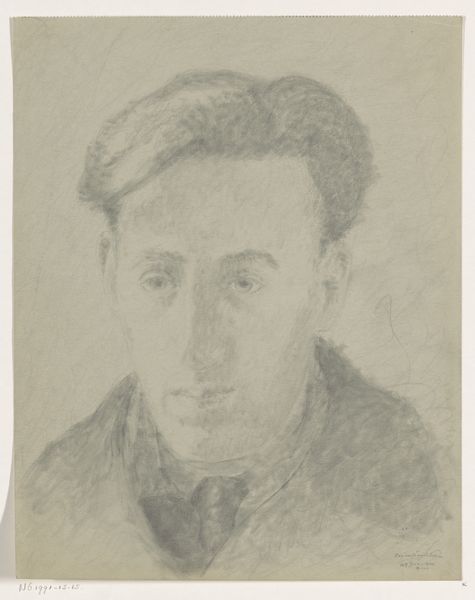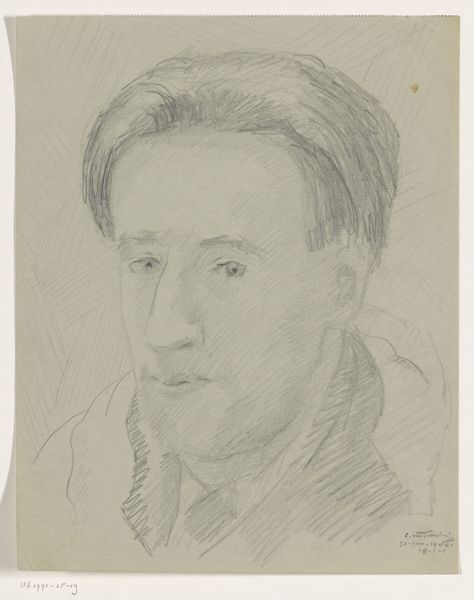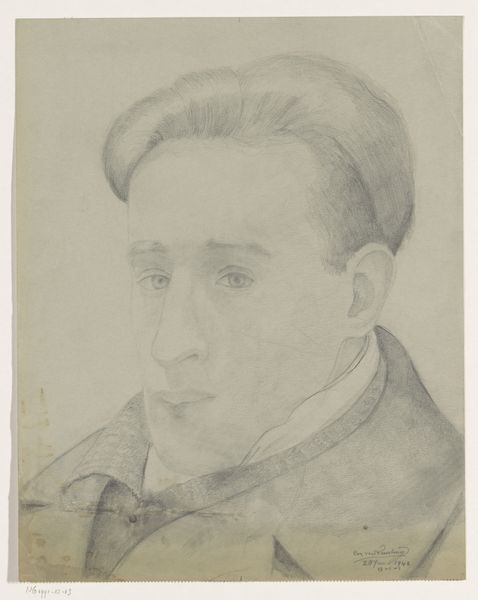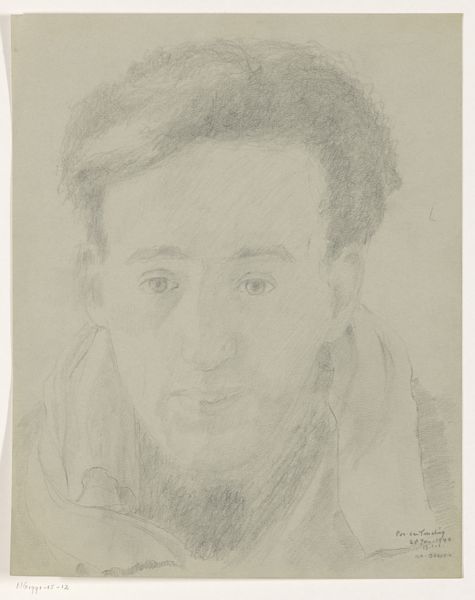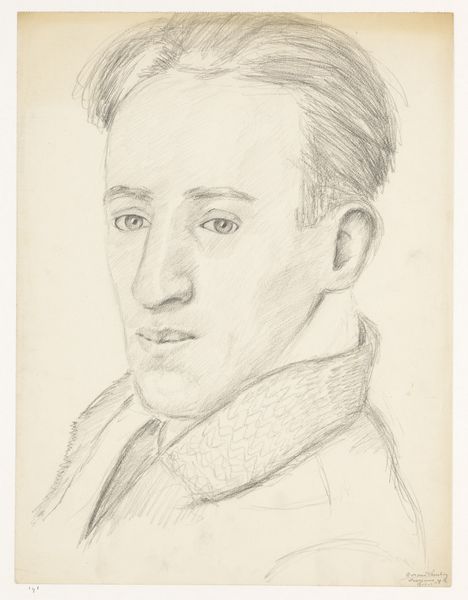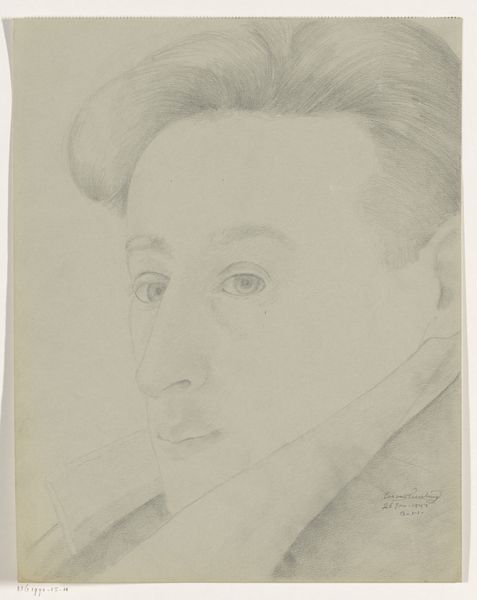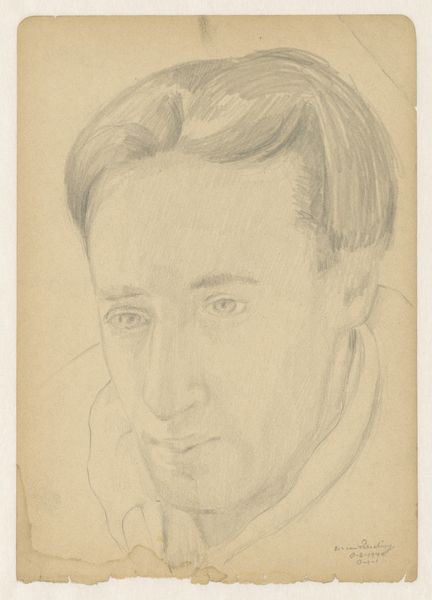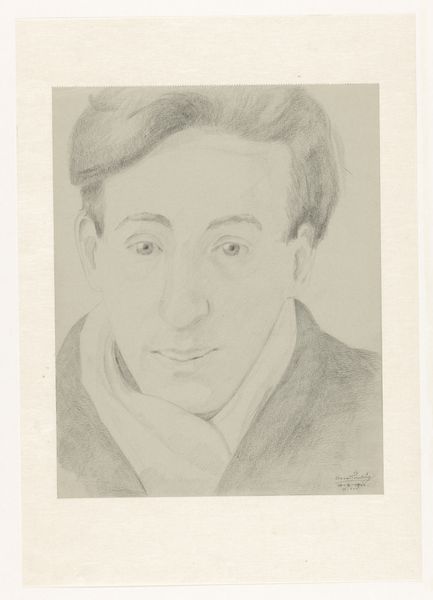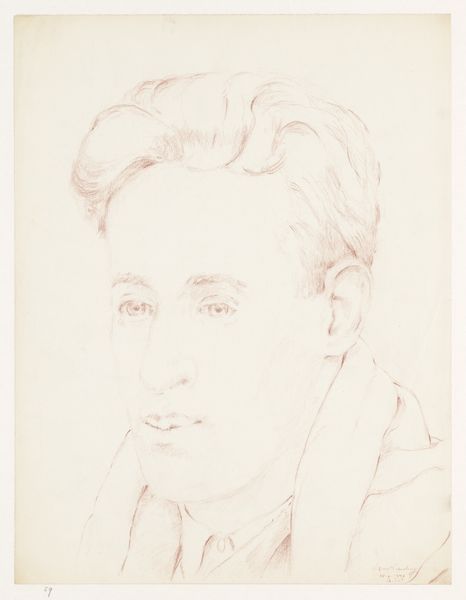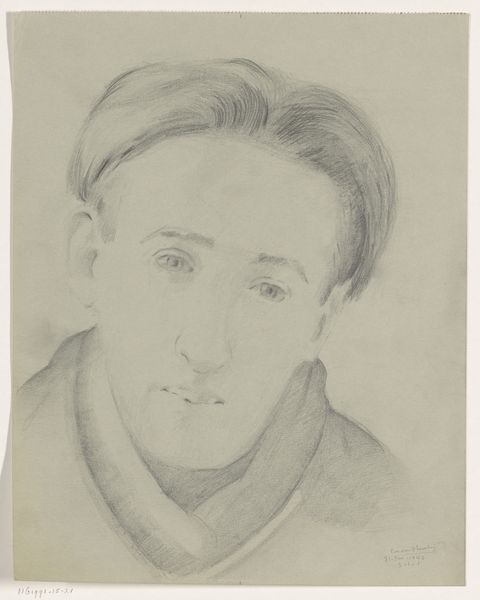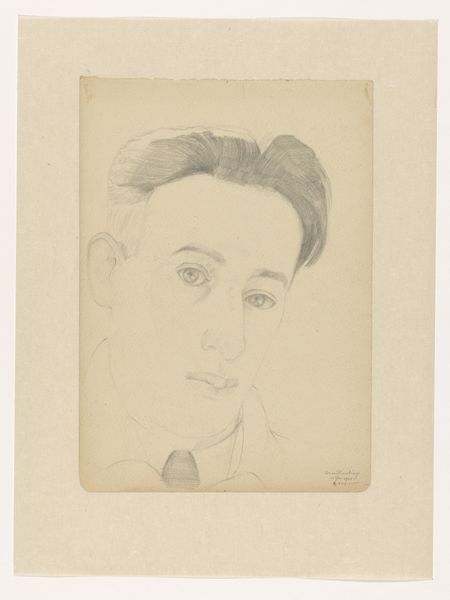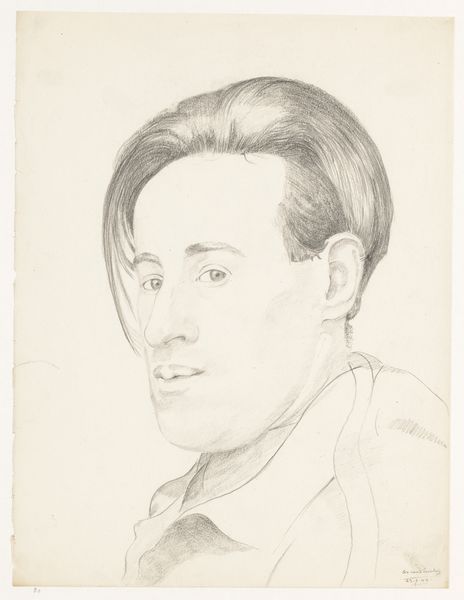
drawing, pencil, graphite
#
portrait
#
pencil drawn
#
drawing
#
facial expression drawing
#
self-portrait
#
pencil sketch
#
portrait reference
#
pencil drawing
#
pencil
#
graphite
#
animal drawing portrait
#
portrait drawing
#
tonal art
#
portrait art
#
fine art portrait
Dimensions: height 31.0 cm, width 24.5 cm
Copyright: Rijks Museum: Open Domain
Curator: This is Cor van Teeseling's "Self-portrait: B-1-1, 29 januari," possibly created in 1942. It's currently held here at the Rijksmuseum. Editor: It has an unfinished quality that's quite striking. You can see the skeletal lines, the ghost of a man emerging. The artist doesn’t seem interested in portraying a final image, more a record of observation. Curator: Van Teeseling’s placement within the historical context explains this lack of 'completion'. Remember this was possibly 1942; the Netherlands were under Nazi occupation. Resources were scarce. A simple graphite drawing may have been all that was available, both materially and perhaps psychologically. Editor: Right, scarcity breeds innovation. Look at the subtle gradations achieved with the pencil, that’s born out of real necessity. The control over the material is exceptional – from almost imperceptible lines, building up the form gently, and a limited but affective material palette. What size is the work? Curator: It’s fairly small. Around letter size. Editor: The intimacy enhances its impact. This isn’t some grand statement, but a private act of self-reflection made tangible. In those times, this could become also be read as an act of defiance. Curator: It does speak to the importance of individual identity amid the pressures of a totalitarian regime. The drawing offers insight into the public role of art, documenting resistance by its mere existence. And in this institutional setting we are also part of its 'resistance', so to speak. Editor: Yes, placing an image in this specific display is a gesture. I am stuck by how modern this portrait looks. What’s so timeless about its appeal? Curator: Perhaps the universal human need to understand oneself and to defy oblivion through self-representation? Plus, the social context adds to its narrative weight; van Teeseling’s self-examination speaks of resilience. Editor: I agree; it’s in the trace of the artist's labor, etched on paper. It makes us consider what defines a finished piece, versus a significant trace of the process, the materials and ultimately humanity. Curator: Thank you for that insight. I leave this experience with a better appreciation for how historical context influences not only an artwork’s production but also its continuing resonance today.
Comments
No comments
Be the first to comment and join the conversation on the ultimate creative platform.
